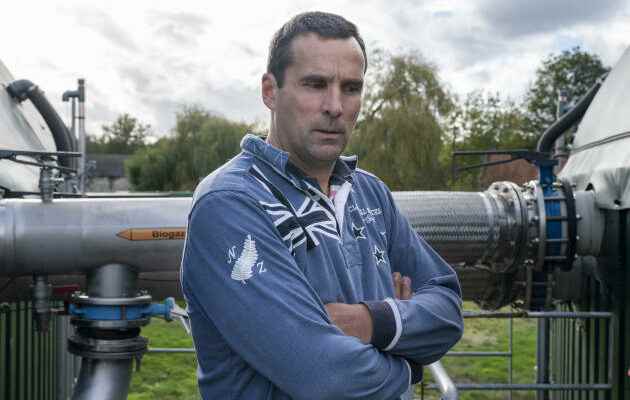A little below the stone-walled farmhouse, on the path leading to the neighboring village, the three large green domes blend into the bucolic landscape. In this valley of the Oise, where methanizers flourish, and are sometimes disputed, Olivier Thomas, breeder and owner of the Parvillers farm, in Sempigny, is a convinced precursor.
“Before the exploitation lived from the sale of crops and the fattening of animals”says the farmer who, since 2018, has embarked on a project to inject renewable gas, based on agricultural waste, with his friend Mauritz Quaak, the pioneer in the field: “Today, we recover the manure, which we supplement with beet pulp, intermediate crops – rye which does not reach maturity – and we sell gas, which gives us additional income, order 40% to 50% more. »
Next to the installation, heaps of onion skins – sold by a neighbor – are piled up while several Charolais and blondes from Aquitaine spend a head from the barn opposite. “Every day we feed the methanizer with 30 tonnes of bio-waste that we heat to 42 degrees”details the breeder, now also a chemist: “We reconstitute the bacteria inside as it would be done in the stomach of a cow. » With these 10,000 tonnes of bio-waste, the installation obtains 11 GWh of gas per year. The equivalent of the needs of 2,000 low-energy housing units. Enough to supply neighboring villages and even Noyon, a town of 15,000 inhabitants, with renewable gas.
Profitability not assured
If these pioneers are doing quite well, those who start today are no longer really in the same boat. “Banks no longer lend as easily, the cost of scrap metal has doubled, that of the concrete used to manufacture the methanizer tanks too, and the gas selling prices have fallen by at least 15%”, details Mauritz Quaak. And that’s not counting the cost of electricity. If this project were to be redone “it would not cost 4.2 million euros but rather 6 million”he adds, warning that investing in this type of methanizer is almost like buying a second farm.
“Today, the fact of having digestates (the fertilizers from the methanizer) allows us to make serious savings. Because the price of gas weighs more on that of conventional fertilizers, which have quadrupled in two yearsexplains Olivier Thomas. But this financial situation varies and, at present, we must also count on the increase in the cost of crops, which also have a price. »
You have 36.12% of this article left to read. The following is for subscribers only.
